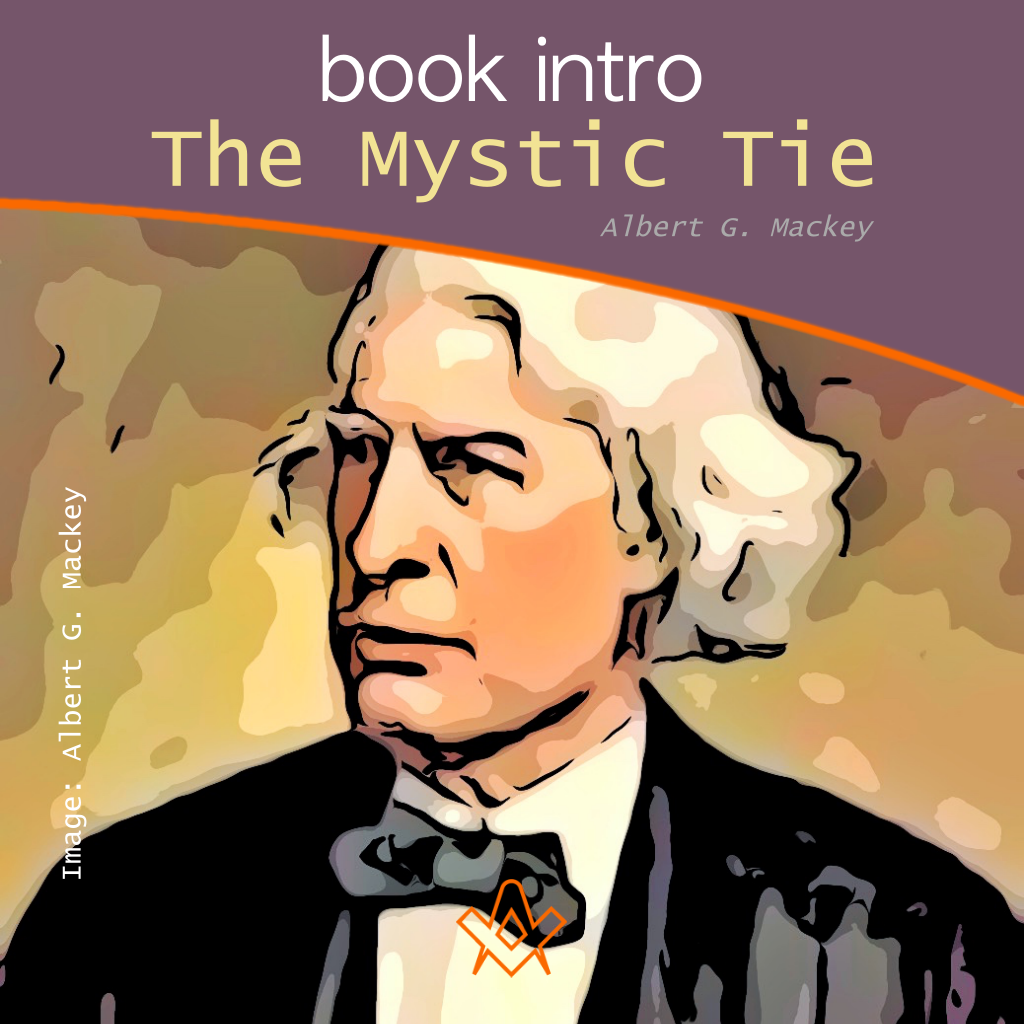Extracted and abridged from The Mystic Tie: Or, Facts and Opinions, Illustrative of the Character and Tendency of Freemasonry
by Albert Mackey, Masonic Publishing and Manufacturing Co, New York, 1867
In the present state of Freemasonry, dispersed as it is over the whole face of the Labitable globe, and distinguished by an anxious inquiry, whether its reputed origin be well founded, and whether its philosophy and the evidences on which its claims to public notice are entitled to the implicit credence of mankind; it is the duty of every Brother, so far as his influence may extend, to furnish the means of satisfying this ardent curiosity.
Rev. Dr. George Oliver, Introduction to the Landmarks
Definitions of Freemasonry
As a further reply to the question which has been the subject of discussion in the preceding article, the views of other writers, advanced in the form of definitions of our Order, may be added.
They will show the concurrent opinions of distinguished writers as to the excellence and usefulness of the institution.
Hutchinson, who was one of the earliest philosophical writers on Freemasonry, defines it to be at once a religious and civil society, and declares that the corner-stone on which its foundations are placed, is “the knowledge of the God of nature, and that acceptable service where-with he is well pleased”.
Calcott, another early writer, defines a Mason to be one who, by gradual advances in the sublime truths, and various arts and sciences which the principles and precepts of Freemasonry tend to inculcate and establish, raised by regular courses to such a degree of perfection, as to be replete with happiness to himself, and extensively beneficial to others.
The amiable and unfortunate Dr Dodd has beautifully described Freemasonry as;
“an institution founded on eternal reason and truth; whose deep basis is the civilization of mankind, and whose everlasting glory it is, to have the immovable support of those two mighty pillars, science and morality”.
“The Masonic system”, says Stephen Jones, in 1796, “exhibits a stupendous and beautiful fabric, founded on universal piety. To rule and direct our passions; to have faith and love in God and charity towards man, I consider as the objects of what is termed speculative Masonry”.
Preston’s definition of speculative Masonry has been so highly approved, as to have been adopted by common consent, as a part of the modern ritual.
It is, that it is an institution so far interwoven with religion, as to lay us under the strongest obligations to pay that rational homage to the Deity, which at once constitutes our duty and our happiness.
It leads the contemplative to view with reverence and admiration the glorious works of creation and inspires them with the most exalted ideas of the perfections of the Divine Creator.
The Duke d’Antin, who was in 1740 the grand master of France, has thus defined Freemasonry:
The whole world is only a republic, of which each nation is a family, and every individual a child. The sublime art of Masonry, without interfering with the various duties which the diversities of condition demand, tends to create a new people, who, being composed of
several nations, are all in some way cemented by the bond of science, morality, and virtue.
But one of the best definitions is to be found in the first article of the Constitution, promulgated in 1849 by the Grand Orient of France:
Freemasonry is an institution essentially philanthropic, philosophic, and progressive, which has for its basis I the existence of God and the immortality of the soul.
I It has for its object the exercise of benevolence, the study of universal morality, and the practice of all the virtues.
The Rev. Daniel Turner, in 1787, defined Freemasonry to be a mystic science, wherein, under apt figures, select numbers and choice emblems, solemn and important truths, naturally tending to improve the understanding, to mend the heart, and to bind us more closely to one another, are most expressly maintained.
But none of these definitions appears to me to convey with sufficient emphasis the idea of the scientific and philosophical design of Freemasonry.
Looking, then, to this view more than either its moral, charitable, or, least of all, its social tendencies, I should be disposed to define Freemasonry to be a science of symbols, in which, by their proper study, a search is instituted after truth— that truth consisting in the knowledge of the divine and human nature, of God and the human soul.
Freemasonry and Religion
If Masonry be not an universal religion, it forms a most beautiful auxiliary to every system of faith, which man’s freedom of thought has projected, to carry him to the one happy bourne, which is the common object of all our hopes and wishes.
— Oliver’s Landmarks ii. 87.
Freemasonry is not religion. It does not claim to possess any of the renovating efficacy, or consoling influences, of that necessary ingredient in the moral constitution of man.
When, therefore, the enemies of our Order charge the fraternity with endeavoring to make Masonry a substitute for religion, they know, if they know anything at all about the matter, that the claim is one that has never been advanced, or attempted to be supported by the craft.
To the honest inquirer, our lectures would indeed remove every doubt upon this subject. Through them, an early opportunity is seized to inform the candidate, in the course of his instruction, that speculative Masonry is only so far interwoven with religion, as to lay the Mason under obligation to pay that rational homage to the Deity, which should at once constitute his duty, and his happiness.
But the Ancient Charges — the written and unchangeable law of our institution— not local, but universal in their application, extending their authority to all parts of the world, and governing and directing Masons wherever they meet, are still more explicit.
They teach us what is the connection between Masonry and religion, in these emphatic and unmistakable words:
A Mason is obliged, by his tenure, to obey the moral law; and if he rightly understands the art, he will never be a stupid atheist, nor an irreligious libertine. But though, in ancient times. Masons were charged in every country, to be of the religion of that country or nation, whatever it was, yet it is now thought more expedient, only to oblige them to that religion in which all men agree, leaving their particular opinions to themselves; that is, to be good men and true, or men of honor and honesty, by whatever denominations or persuasions they may be distinguished; whereby Masonry becomes the centre of union, and the means of conciliating true friendship among persons, which must have remained at a perpetual distance.
– The Old Charges. See Book of Constitutions, Ist Edition, p. 50 (U.M. L., vol. XV., book 1, p. 50).
Masonry, then, is not a religious sect. It has no creed, except that simple one of theism, in which all good and sensible men agree; no “saving ordinances”, which must not be neglected at the peril of the soul; no decrees of councils to regulate its faith; no articles of belief which require an unconditional subscription.
It selects for no man, the mode and manner in which he must worship his Maker; designates no peculiar church in which he must offer up his devotions; directs no form of altar on which he must make bis oblations; and institutes no liturgy for his form of prayer: but leaves the religious tenets of each member, as a matter for his own conscience to prescribe.
But although Masonry is not, in itself, either religion, or a substitute for it, it is evidently a religious institution.
If it be the object of religion, to bind us to the performance of our duties, by the sacred obligations which we owe to God ; to point us to the hopes and expectations of another and a better world ; and to direct us in the conduct of the present, by a standard which is to be applied to the future— then, in such a sense as this, Freemasonry is emphatically a religious institution.
It teaches the existence of a God. It demands, as an imperative prerequisite to admission, a belief in that Omnipotent Being, whose wisdom devised the universe, whose strength continues to support the vast design, and the beauty of whose holiness covers it as with a mantle.
It points to the celestial canopy above, as the eternal Lodge in which he presides. It instructs us in the way to reach the portals of that distant temple, and reminds us of that faith which should never doubt — that hope which should never sicken — that charity which should never weary in well doing.
The existence of a revealed religion, is a dogma which Freemasonry continually inculcates.
It is true, it does not enter into the speculations of polemical theology, but leaves to each one’s conscience the question of what that revelation is, and to God to judge whether that conscience has determined rightly.
Yet does it teach, that He who made man in his own image, and claimed, for this gracious boon, a blind obedience to his will, would not, in his mercy and justice, have made this exaction, unless he had revealed to man the laws by which he was to be governed.
Hence the revealed will of God, which, in Christian and Jewish Lodges, is admitted to be the volume of Holy Scripture, is emphatically said to be that great light of Masonry, whose bright effulgence, like a friendly beacon, warns us of the perils that surround us and points us to the haven of security.
And it may sur prise those who know nothing of the institution, to learn that, by the laws of the fraternity, no Lodge can legally proceed to business, until the sacred volume is opened upon the altar.
With these views of the Deity, it is to be expected that a reverence for his holy name must form a part of the Masonic creed.
No Mason will readily forget that solemn moment in the course of his initiation, when the name of the Grand Geometrician of the Universe was first invoked, and when he was taught, ever at that name, to bow with humble submission and fearful awe.
And so deeply is this lesson of reverence impressed, and so stringent are the laws which prescribe its enforcement, that instances of profanity are never known within the precincts of the Lodge.
Men, reckless in their language in other places, and at other times, become, in that sacred asylum, religiously respectful in all their expressions.
Thus, in all its sayings and doings. Masonry seeks the counsel and support of religion, and strives to unite itself with that holy institution.
Yet not, as I have said already, with the religion of a sect; for Masonry, to be effective for good, must be a universal system, and sectarianism would destroy that universality.
The Jew, the Muslim, the Pagan, or the Christian, must be permitted to enter our Lodges without the fear of theological controversy, or the risk of dogmatical insult.
Hence, to quote the language of the Rev. Dr Oliver, Oliver,
“all our charges, all our regulations, assume as a foundation that cannot be moved, a belief in the being of a God, and a future state of rewards and punishments; and inculcate the necessity of moral purity as a qualification for future happiness; and this, according to our definitions, forms the sum and substance of religion, in its most universal acceptation.”
Article by: Albert G. Mackey
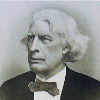
Albert Gallatin Mackey (1807 – 1881) was an American medical doctor and author.
He is best known for his books and articles about freemasonry, particularly the Masonic Landmarks.
In 1849 he established The Southern and Western Masonic Miscellany, a weekly masonic magazine.
He served as Grand Lecturer and Grand Secretary of The Grand Lodge of South Carolina, as well as Secretary General of the Supreme Council of the Ancient and Accepted Scottish Rite for the Southern Jurisdiction of the United States
Recent Articles: in this series
 Book Intro: The Secret Doctrine Explore the profound synthesis of science, religion, and philosophy in H.P. Blavatsky's "The Secret Doctrine." Discover the true depth of Theosophy beyond the oversimplified term "Esoteric Buddhism" and uncover the universal wisdom that transcends religious boundaries. A compelling introduction to Theosophical literature and its broader, esoteric truths. |
 Book Intro - The craftsman and freemason's guide Dive into the enigmatic world of Freemasonry with Cornelius Moore's comprehensive guide. Uncover the symbolic rituals, trace the fraternity's historical roots, and gain a deeper understanding of this age-old society. Perfect for Freemasons and curious readers alike. Unlock the secrets of Freemasonry today! |
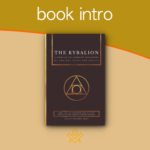 Unravel the secrets of the ancient Egyptian wisdom with our comprehensive guide to the Kybalion, by Three Initiates. Discover its influence on modern thought, the controversies surrounding it, and its seven profound Hermetic principles. Unlock the power of these timeless teachings to transform your understanding of life's mysteries. |
 Book Intro - The Working Tools of an Old York Master by Wilmshurst Unlock the Secrets of Freemasonry! Dive into the profound symbolism of 'The Working Tools of an Old York Master.' Discover the hidden meanings behind the square, compass, plumb line, and more. Embark on a transformative journey of personal growth and spiritual enlightenment. Uncover the ancient wisdom that has shaped generations of Masons. |
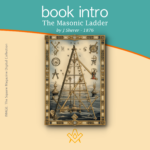 Book Intro - The Masonic Ladder by J Sherer Unlock the mysteries of Freemasonry with "The Masonic Ladder" by J. Sherer - - 1876. This 19th-century guidebook takes readers on a journey through the steps of the Masonic ladder, from the basic principles of the Entered Apprentice to the highest degree of the Sovereign Grand Inspector General. Discover the symbolism, allegory, and values of Freemasonry in this timeless classic. |
 Book Intro - The London mason in the seventeenth century The London Mason in the Seventeenth Century by Douglas Knoop offers a comprehensive examination of the lives and work of masons in the bustling city of London during the seventeenth century. The book delves into the intricacies of their craft, the socioeconomic and political forces that influenced their profession, and the role they played in shaping the architectural landscape of London. |
 Book Intro - History of Freemasonry, Gould, Robert Freke The History of Freemasonry is a comprehensive overview of the origins, development, and evolution of Freemasonry from its ancient roots to the modern era. The book explores the fascinating history of one of the oldest and most mysterious organisations in the world, which has been the subject of much speculation and curiosity over the centuries. - by Robert Freke Gould |
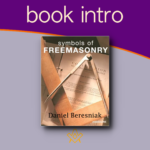 Book Intro - Daniel Beresniak Symbols Of Freemasonry This book is a collection of the symbolic images which Freemasons encounter on their journeys of transformation.' The texts and illustrations form an intimate dialogue whose subject is Freemasonry, and which casts light on the relationship between dreams and reality, reason, intuition and imagination. |
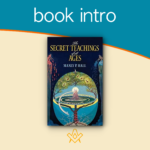 Book Intro - The Secret Teachings of All Ages by Manly P Hall The Secret Teachings of All Ages by Manly P Hall is a comprehensive and in-depth exploration of the various esoteric and occult traditions that have shaped human history. The book covers a wide range of subjects including alchemy, astrology, mysticism, and secret societies, and provides detailed explanations of the underlying principles and concepts. |
 Book Intro - Duncan's Masonic Ritual and Monitor Duncan's Masonic Ritual and Monitor is an impression of the Old York Rite published in New York in 1866. |
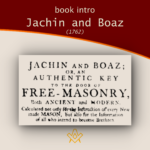 Book Intro - Jachin and Boaz (1762) Thirty two years after Samuel Prichard's Masonry Dissected (1730) a second detailed exposure was published Jachin and Boaz (1762) attributed to the same author, and met with equal distain by Freemasons of the time. However, these exposures offer the masonic historian an invaluable view in to how freemasonry was conducted during its early formation |
 Book Intro - Three Distinct Knocks (c.1760) Giving an exact account of all their proceedings in making a brother, with the three obligations or oaths belonging to the first second, and third degrees of masonry, viz. The entered apprentice, fellow-craft, and master-mason: with the obligating on belonging to the chair, and the grip and word. |
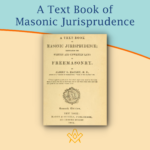 Book Intro - A Text Book of Masonic Jurisprudence An introduction to Albert Mackey's seminal work on Masonic Jurisprudence – the theory or philosophy of Masonic law. The Foundations of Masonic Law are to be found in the Landmarks, or Unwritten Law, and in the Ancient Constitutions, or the Written Law. These constitute the subject matter of the book. |
 Book Intro - The Perfect Ceremonies Of Craft Masonry 1871 A beautiful example of a the rituals, produced in a Medieval illuminated script style. Facsimiles still exist of this illustrated ritual book, of which the most authentically produced version is that available from the Scottish Rite Masonic Book Club. |
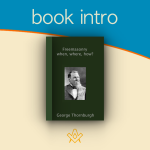 Book Intro – Freemasonry; when, where, how? Introduction to Freemasonry; when, where, how? By George Thornburgh |
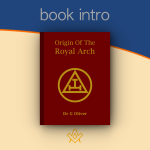 Book Intro - Origin Of The Royal Arch An introduction to the Origin of the Royal Arch, through the eyes of the English nineteenth century masonic author Dr G Oliver (1782–1867) |
 Book Intro – Symbolical Masonry Symbolical Masonry is a treasure-house of Masonic lore, including discussions of key concepts of the first three degrees, along with an extensive study guide. |
 This month we look at – 'A portrait gallery, with biographical sketches of prominent freemasons throughout the United States' |
 Extracted and abridged from The Mystic Tie: Or, Facts and Opinions, Illustrative of the Character and Tendency of Freemasonry By Albert Mackey, |
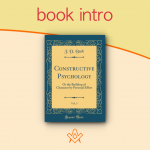 Book intro - Constructive Psychology The introduction to Constructive Psychology or The Building Of Character By Personal Effort by J D Buck a masonic author |
 book intro - Cagliostro: the splendour and misery of a master of magic Preface to the book by William Rutherford Hayes; Cagliostro: the splendour and misery of a master of magic |
 book intro - Origin of the Rosicrucians and the Free-Masons Historico-Critical Inquiry into the Origin of the Rosicrucians and the Free-Masons – Thomas De Quincey |
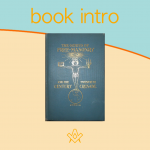 Book Intro - The Genius of Freemasonry The Genius of Freemasonry: “Has any brother anything to offer for the good of Masonry?” The following pages are the author’s answer to that question. |
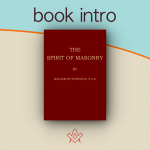 Book Intro - The Spirit of Masonry An essential source for anyone interested in exploring the inner mysteries of the Masonic Fraternity. |
 Book intro - History of Freemasonry Introduction to a classic masonic book by J. G. Findel, History of Freemasonry published 1866 |
 The Book of Constitutions for the Ancient Grand Lodge or Ahiman Rezon |
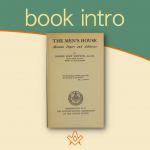 A short introduction to The Men's House, a collection of masonic papers and addresses |
 This is a general survey of Masonic origins, history and philosophy. It was at one time given to every new Mason in Iowa. |
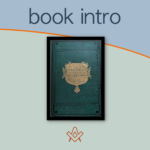 Book Intro - The Discrepancies of Freemasonry Written almost 150 years ago, this book contains wisdom still relevant today. |
 Book Intro - The Principles of Masonic Law "The first great duty, not only of every lodge, but of every Mason, is to see that the landmarks of the Order shall never be impaired". |
 Published in 1911, this fascinating book is equally relevant for the 21st century Mason with an interest in the more mystical side of Freemasonry. |
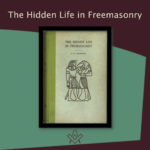 Book Intro - Hidden Life of Freemasonry Introduction to The Hidden Life in Freemasonry (1926) by Charles Webster Leadbeater |
 Book Intro - The Symbolism of Freemasonry Introduction to a classic masonic book; The Symbolism of Freemasonry: Illustrating and Explaining Its Science and Philosophy, its Legends, Myths and Symbols. |
 Book Intro - The Meaning of Masonry This is the Introduction to The Meaning of Masonry, a set of essays which discuss the esoteric side of Masonry |
 Book Intro - Illustrations of Masonry Introduction to Illustrations Of Masonry by William Preston (1742-1818) |
masonic knowledge
to be a better citizen of the world
share the square with two brothers

click image to open email app on mobile device



